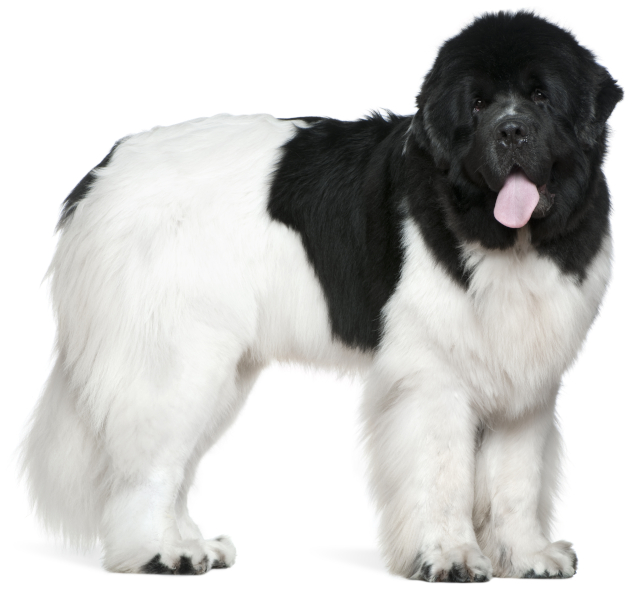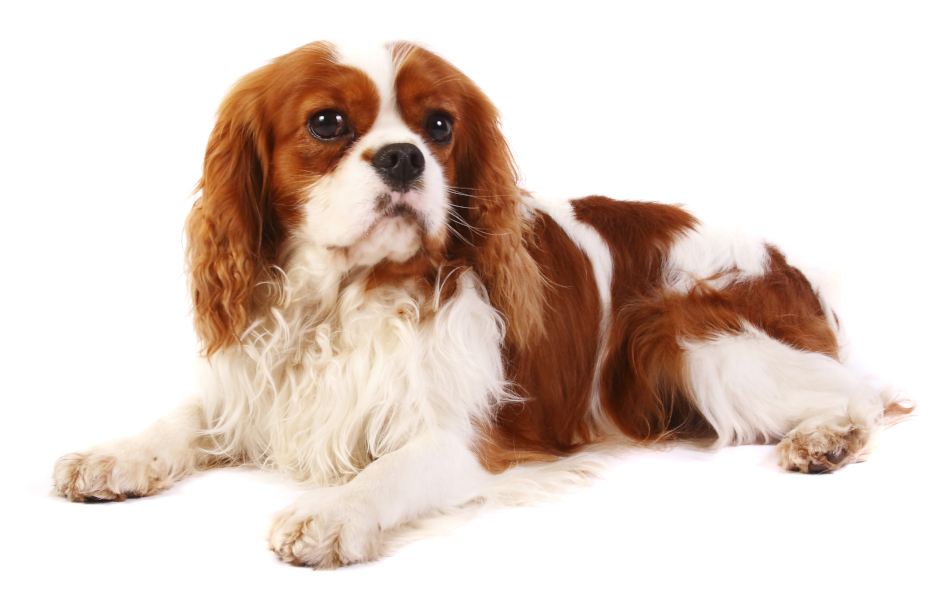Quick Summary

Click here for Price and Turnaround Time
Phenotype: The extent of white pattern expression on the dog's body varies in piebald/parti/random white spotting. The white markings are typically less symmetrical than those seen in dogs with the Irish spotting or mantle patterns.
Mode of Inheritance: Incomplete dominance (some breeds), Autosomal recessive (some breeds)
Alleles: N = Non-piebald, S = Piebald
Breeds appropriate for testing: Many breeds including Basset Hound, Border Collie, Bulldog, Cavalier King Charles Spaniel, Chihuahua, Chinese Shar-Pei, Cocker Spaniel (American and English), French Bulldog, German Shepherd, German Pointer (Longhaired, Shorthaired, and Wirehaired), Havanese, Newfoundland, Poodle, Portuguese Water Dog, Saint Bernard, Yorkshire Terrier, Whippet
Explanation of Results:
- Dogs with N/N genotype do not have any copies of this piebald variant and thus are not expected to display piebald patterning (though they may have other white markings caused by other genes). They cannot transmit this piebald variant to any of their offspring.
- Dogs with N/S genotype have one copy of this piebald variant. They may display no white patterning or some amount of white patterning (varies by breed). They may transmit this piebald variant to 50% of their offspring.
- Dogs with S/S genotype have two copies of this piebald variant and are expected to display some amount of white patterning. White patterning may be extensive in some breeds, with some individuals being nearly completely white. They will transmit this piebald variant to all of their offspring.
Results of this test can be submitted to the OFA (Orthopedic Foundation for Animals)
Dog Coat Color - Basic Panel (All breeds)
$100 per animal
Additional coat colors $15 per test
Dog Coat Color - French Bulldog Panel
$105 per animal
Additional coat colors $15 per test
Dog Coat Color - Bulldog Panel
$80 per animal
Additional coat colors $15 per test
Dog Coat Color - Great Dane Panel
$80 per animal
Additional coat colors $15 per test
Dog Coat Color and Type - Havanese Panel
$115 per animal
Additional coat colors $15 per test
Sample Collection
Dog DNA tests are carried out using cells brushed from your dog's cheeks and gums. The preferred cytology brushes are sent to you by mail, or you may provide your own brushes. For accepted alternative brushes, click here
We recommend waiting until puppies are at least three weeks old before testing.

Step-By-Step:
- Make sure the dog has not had anything to eat or drink for at least 1 hour prior to collecting sample.
- When swabbing puppies, isolate each puppy from the mother, littermates and any shared toys for 1 hour prior to swabbing. Puppies should not have nursed or eaten for 1 hour prior to collecting sample.
- If collecting samples from more than one dog, make sure to sample one dog at a time and wash your hands before swabbing another dog.
- Label brush sleeve with name or ID of dog to be sampled.
- Open brush sleeve by arrow and remove one brush by its handle.
- Place bristle head between the dog’s gums and cheek and press lightly on the outside of the cheek while rubbing or rotating the brush back and forth for 15 seconds.
- Wave the brush in the air for 20 seconds to air dry.
- Insert brush back into sleeve.
- Repeat steps 5 - 8 for each unused brush in sleeve on a fresh area of cheek and gums. Make sure to use and return all brushes sent by the VGL. In most cases, it will be 3 brushes per dog. If using interdental gum brushes, please note that the VGL requires 4 brushes per dog and only moderate or wide interdental gum brushes are accepted.
- Do not seal brushes in sleeve.
- Place all samples in an envelope and return to the address provided.
ATTENTION:
- Do not collect saliva/drool – the key to obtaining a good sample is getting cheek cells on the swab
- Do not rub swab on the dog’s tongue or teeth – this will result in poor quality sample
- Do not collect a sample from a puppy that has recently nursed – the mother’s genetic material can rub off on the puppy’s mouth and contaminate the sample

White spotting patterns that occur in many dog breeds do not have a uniform genetic basis. Some white patterns, such as the Irish spotting, are symmetrical with white markings on the undersides, collar and muzzle, and/or blaze such as seen in Boston Terriers and Corgis. The white pattern called mantle is phenotypically similar to Irish spotting but with more white extending onto the thigh and up the torso, as seen in some Great Danes. A pattern of less symmetrical white spotting, often called piebald, parti, or random white, is present in many breeds. A DNA variant has been found in Microphthalmia Associated Transcription Factor- (MITF) gene that is associated with piebald spotting in many breeds.
The genetic determination of white spotting in dogs is complex. In breeds such as Collie, Great Dane, Italian Greyhound, Shetland Sheepdog, Boxer and Bull Terrier, piebald behaves as a dosage-dependent trait. A dog with one copy of the MITF variant has some white pattern expression, while a dog with 2 copies of the variant display more extreme white with color only on the head and perhaps a body spot. In Boxers and Bull Terriers, dogs with 2 copies of the MITF variant are completely white and dogs with 1 copy display the mantle (called "flash" in these breeds) pattern. However, additional mutations in MITF or other white-spotting genes appear to be present in these breeds that affect the amount of white being expressed. In other breeds, piebald behaves as a recessive trait; that is, 2 copies of piebald are needed to produce white spotting.
Testing for piebald spotting assists breeders with selection of matings that can produce the desired outcome for white.
